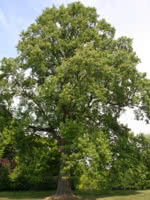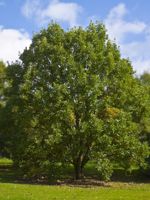Mon-Fri 9am - 5pm Mountain time
Tulip Poplar vs Schuettes Oak
Liriodendron tulipifera
Quercus × schuettei (Quercus bicolor × Quercus macrocarpa)
NOT AVAILABLE THIS SEASON - MIGHT RETURN
NOT AVAILABLE THIS SEASON - MIGHT RETURN
Tulip Poplar is the perfect shade tree for wide open spaces. It has a shallow and extensive root system, so ensure you give it space to grow. The attractive and showy, yellow-orange, tulip shaped flowers are where this tree gets its name.
Tulip Poplar is somewhat rare in Canada but highly sought after as it is difficult to grow. Does best in a moist, well-drained soil.
Schuettes Oak is a naturally occurring hybrid of Swamp White Oak and Bur Oak. With a faster growth than both parent species, it is one of the fastest growing Oak trees. They are known for growing very large and wide, so space them appropriately. It is considered one of the most adaptable Oaks with little preference on soil conditions. It can handle growing in wet, saturated soils as well as those that are dry, clay, or alkaline.
The Schuettes Oak has very large acorns. They have a large cup portion like the Bur Oak, but without the fringe. Due to the Swamp White Oak parentage, the acorns have less tannins and a sweeter taste. They are a food source for various wildlife including birds, squirrels, and deer.
Tulip Poplar Quick Facts
Schuettes Oak Quick Facts
Toxicity: when injested, can be toxic for many animals

